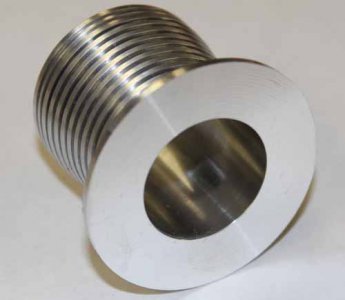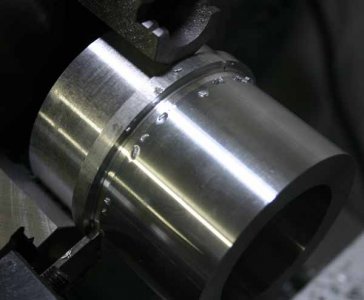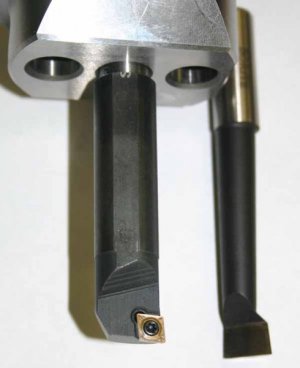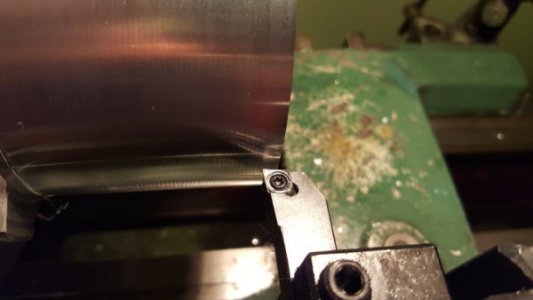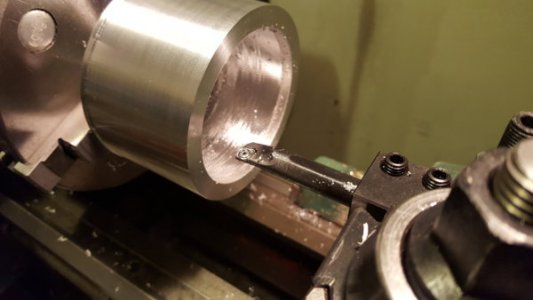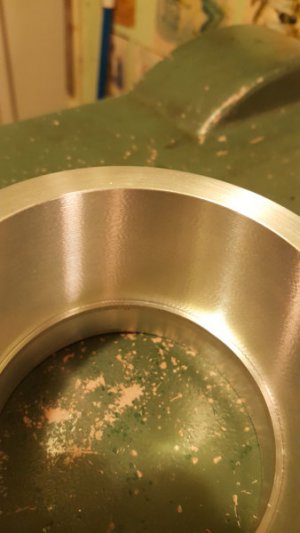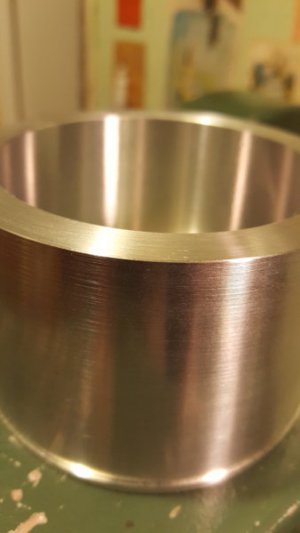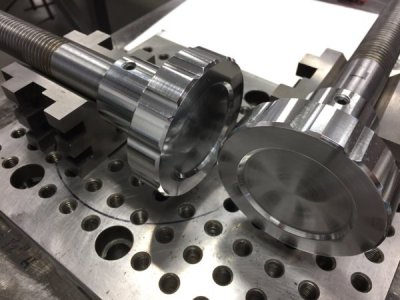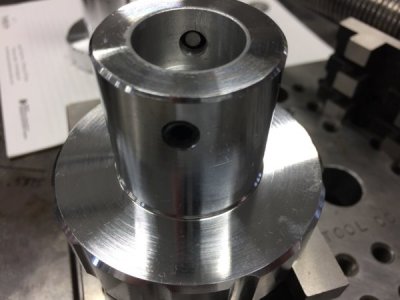Boris,
Make sure you only have enough tool sticking out as need. Choke up as much as possible wherever possible. Paco
^^ what he said ^^
I like the continuous shank boring bars because you can minimize stick-out to the depth of bore & not much more. Just be careful of toolpost interference & small gaps seem to attract swarf getting up in there. I noticed my cheapo thicker/continuous section shank (16mm) boring tool cuts a bit better & defers noise than my thinner shank (13mm) tool which necks down from the clamp part to the tip. Its intended for smaller minimum bore entry but I'm just saying there is less material to resist bending & torsion. The bigger tool is an AliExpress special, I suspect something made of 4140 type steel mixed with tuna cans judging by how it cut with a saw when I modified a similar one fo boring head.
Some other things to ponder
- those same uncoated inserts come in a host of variable nose radius. Larger radius makes for better finish (but require a bit more oomph 7sometimes don't like minimal skim cuts)
- if you are hearing harmonics, experiment with the rpm and/or feed. maybe I missed, but how much in-feed? Boring tends to favor less & ringing can start to happen on thinner remaining shell. Ive heard some people apply things to dampen but Ive never been brave enough to have a wad of putty fly off in my face

- boring bar work inevitably involves deflection, so lock the cross feed when turning and do a spring pass (or more) ideally at different fed rate settings so the cutter doesn't feed into its prior track so to speak, rather you want it to cut across the previous hill tops
- so many cutting fluids to choose from, but just make sure your edge does not hav ealuminum welded on the tip or even chipped tip. Harder to spot on the uncoated ones, I need my magnifying glass
- look for any debris under the insert, all it takes is a whisker & the geometry is off. I wash mine in a thimble of thinner before assembling.

